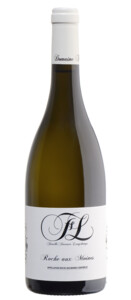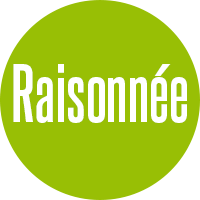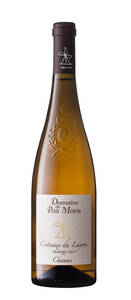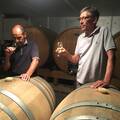




We recognize the Loire by its exceptional landscapes, particularly by its castles and fortresses following 800 km of the Loire valley. Vineyards are essential elements of this unique cultural landscape and bloom from Chalonnes-sur-Loire (Maine et Loire) to Sully-sur-Loire (Loiret). They have given birth to a wine list offering some of the richest and softest wines, recognized amongs the best in France.












The vineyards of the Loire distinguish themselves by the diversity of their natural environment, resulting from the huge diversity of soils and subsoils. The Nantes country consists of igneous and metamorphic rocks of the Armorican Massif, with mainly gneisses, schists mica, Greenstone and granite. In Saumure and Touraine, the subsoil is rich in limestone, sand and siliceous clay. In Anjou, the subsoil essentially consists of slate, stoneware, carboniferous schists as well as volcanic rocks native of the Armorican Massif. Let us not forget the seasonal variations of storms influenced by the Atlantic ocean; vineyards of Nantes enjoy hot and often very wet summers, whereas the vineyards of Anjou enjoy an oceanic climate with soft winters and hot summers with plenty of sunshine. The climatic variation combined with the geologic diversity produces a big floral wealth of the landscapes and contributes to the big diversity of wines of the region.
The vineyard of the Loire Valley stand out thanks to its exploitations. Spread over thousands of kilometres, they are grouped into 4 main geographical areas. These lands where a multitude of grape varieties grow attract many wine lovers every year.
The vineyards of the Loire River are divided into several wine growing areas. From Chalonnes-sur-Loire to Sully-sur-Loire, it produces 4 million hectolitres of wine every year. When crossing it, you will pass through several cities: Angers, Bourges, Clermont-Ferrand, Orleans, Nantes and Tours.
The wine-growing region is home to many important vineyards. This is the Nantes vineyard. It starts south and east of Nantes, going as far as Ancenis and in parts of the Vendée and Maine-et-Loire departments.
Then comes the Touraine vineyards on the banks of the Loire and the Anjou vineyards located between Angers, Montsoreau, Saumur and Thouars. The rest of the wine-growing area is made of the Centre vineyard, itself divided between the Orléanais, Centre-Loire and Massif Central vineyards.
The vineyards of the Val-de-Loire benefit from 3 different types of climates. The areas located in the Pays de la Loire are subject to the ocean climate conditions. On the Centre-Loire and Touraine sides, the weather has a continental tendency. Finally, in the Massif Central, the climate is slightly mountainous.
The variety of soils in this wine region is impressive. This is what gives the wines of the Loire Valley their particularities. The terroir is characterized by sandy, siliceous, schist, volcanic or granite surfaces. Combinations of different types of soil (sandy-siliceous, clayey-limestone, sandy-gravelly...) also exist depending on the geographical area.
With its many vineyards and its geological wealth favourable for the vine, the Loire wine-growing region has many surprises in store for you. In order to obtain reds and rosés, the farmers work many grape varieties such as Cabernet Franc, Pinot Noir or Gamay. For the Loire white wines, they use chardonnay, chenin blanc and also sauvignon.
The Loire vineyard subdivisions each have numerous appellations. Here are some of them.
The Nantes vineyard has many AOCs (Appellations d'Origine Contrôlée): Muscadet, Muscadet-Sèvre-et-Maine, Muscadet-Coteaux-de-la-Loire and Muscadet-Côtes-de-Grandlieu. These are all white wines. The vineyards of Anjou offer various appellations such as Anjou (white and red), Anjou fine bubbles (sparkling wine) or AOC Bonnezeaux, a sweet white wine.
The Touraine vineyard produce appellations such as Bourgueil (red wines from the Loire), Chinon (red and white wines), Haut-Poitou (red, rosé and white wines) and many others. The different vineyards in the Centre have their own AOCs. In the subdivision of Centre-Loire, you will find the appellation Pouilly-fumé, a white wine or Châteaumeillant, for reds and rosés.
In the vineyards of the Massif Central, the Côtes-roannaises and Côtes-du-Forez appellations are waiting for you. Finally, in the Orléanais area, you will discover the AOC Orléans, Orléans-Cléry and Coteaux-du-giennois.
To get to know the Loire vineyards better, remember to visit the estates in the region. The Domaine Dozon run by Éric Santier welcomes you in Chinon. During your visit, find out more about grape growing. You can also buy Loire wine there. If you are looking for another estate, go to the Fief Noir in Anjou, Coteaux du Layon.
After a few purchases of Loire Valley wines from Les Grappes, you need to know which dishes to pair them with. The reds of the wine region go equally well with rillettes and andouilles. Dry white wines such as Muscadet can be enjoyed with foie gras; but also fish-based specialities such as grilled sardines or chowder (cuttlefish and fish poached in Muscadet).
At Les Grappes, we selected the best wines to introduce you to pleasure, the art of tasting and greedy meals! To enjoy a white wine of the Loire, we would recommend cheese platters containing Saint Maure of Touraine or even a wild salmon steak. When it comes to red wine, wines of the Loire go well with cheese, such as Roquefort or Reblochon. As for the Rosé of the Loire, they would delight you when paired with exotic dishes or desserts!
